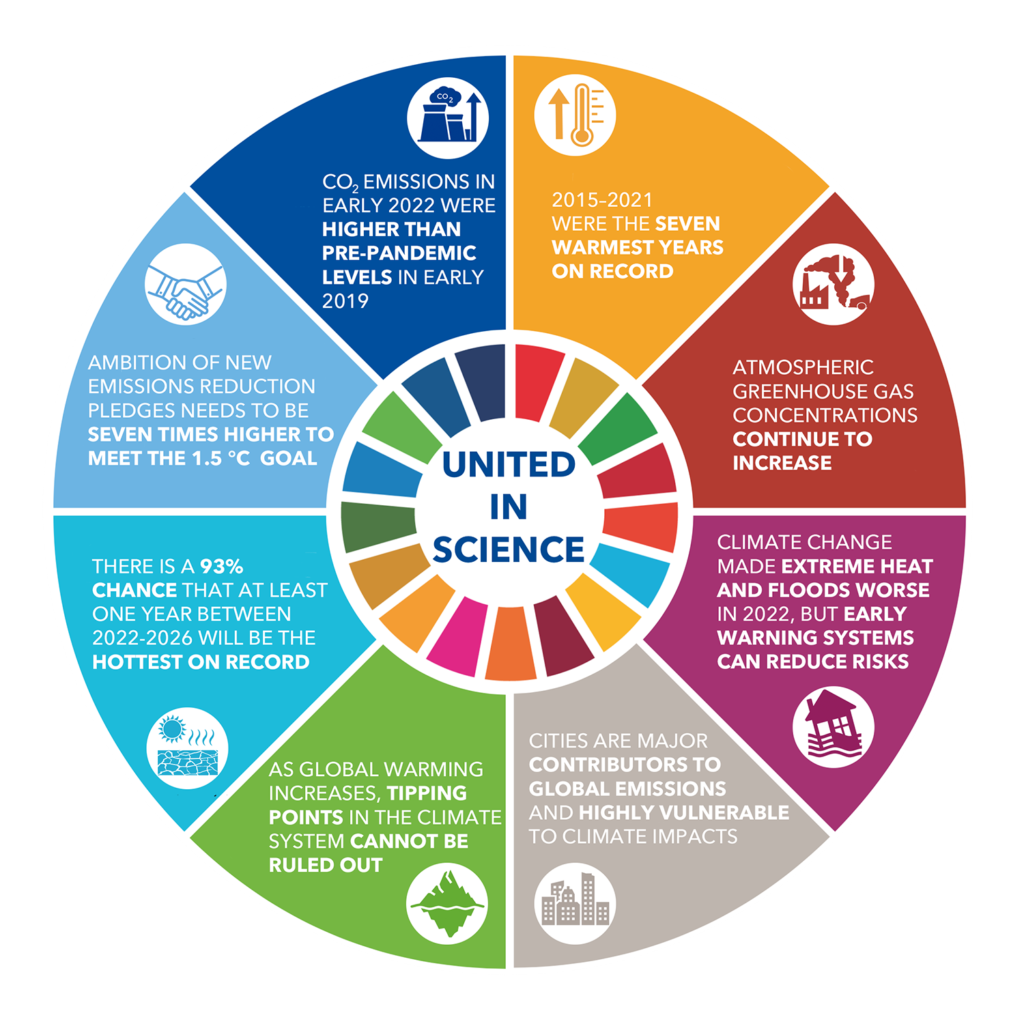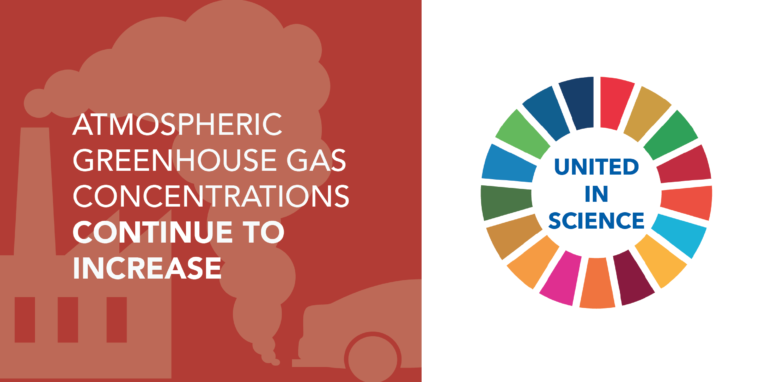A new multi-agency report coordinated by the World Meteorological Organization (WMO), has highlighted the huge gap between climate action aspirations and reality. Without much more ambitious action, the physical and socioeconomic impacts of climate change will be increasingly devastating, it warns.
The report, United in Science, shows that greenhouse gas concentrations continue to rise to record highs. Fossil fuel emission rates are now above pre-pandemic levels after a temporary drop due to lockdowns. The ambition of emissions reduction pledges for 2030 needs to be seven times higher to be in line with the 1.5°C goal of the Paris Agreement.
The past seven years were the warmest on record and there is a 48% chance that, during at least one year in the next five years, the annual mean temperature will temporarily be 1.5°C higher than 1850-1900 average. As global warming increases, “tipping points” in the climate system cannot be discounted.
UN secretary-general António Guterres said, “Floods, droughts, heatwaves, extreme storms and wildfires are going from bad to worse, breaking records with alarming frequency. Heatwaves in Europe. Colossal floods in Pakistan. Prolonged and severe droughts in China, the Horn of Africa and the United States. There is nothing natural about the new scale of these disasters. They are the price of humanity’s fossil fuel addiction.
“This year’s United in Science report shows climate impacts heading into uncharted territory of destruction. Yet each year we double-down on this fossil fuel addiction, even as the symptoms get rapidly worse,” Guterres said.
Prof. Petteri Taalas, WMO secretary-general, said, “Climate science is increasingly able to show that many of the extreme weather events that we are experiencing have become more likely and more intense due to human-induced climate change. We have seen this repeatedly this year, with tragic effect. It is more important than ever that we scale up action on early warning systems to build resilience to current and future climate risks in vulnerable communities. That is why WMO is spearheading a drive to ensure ‘Early Warnings for All’ in the next five years.”
United in Science provides an overview of the most recent science related to climate change, its impacts and responses. Urgent action is needed to mitigate emissions and adapt to the changing climate, according to the report. Some of the key findings include:
Global Carbon Project – Global fossil CO2 emissions in 2021 returned to the pre-pandemic levels of 2019 after falling by 5.4% in 2020 due to widespread lockdowns. Preliminary data shows that global CO2 emissions in 2022 (January to May) are 1.2% above the levels recorded during the same period in 2019, driven by increases in the USA, India and most European countries.
WMO – The most recent seven years, 2015 to 2021 were the warmest on record. The 2018–2022 global mean temperature average (based on data up to May or June 2022) is estimated to be 1.17°C ± 0.13°C above the 1850–1900 average. A La Niña event has had a slight cooling effect on temperatures in 2021/22 but this will be temporary.
Around 90% of the accumulated heat in the Earth system is stored in the ocean, the Ocean Heat Content for 2018–2022 was higher than in any other five-year period, with ocean warming rates showing a particularly strong increase in the past two decades.
 Met Office, UK/WMO/World Climate Research Program – The annual mean global near-surface temperature for each year from 2022-2026 is predicted to be between 1.1°C and 1.7°C higher than pre-industrial levels (1850-1900). The likelihood of the annual mean global near-surface temperature temporarily exceeding 1.5 °C above pre-industrial levels for at least one of the next five years is 48% and is increasing with time.
Met Office, UK/WMO/World Climate Research Program – The annual mean global near-surface temperature for each year from 2022-2026 is predicted to be between 1.1°C and 1.7°C higher than pre-industrial levels (1850-1900). The likelihood of the annual mean global near-surface temperature temporarily exceeding 1.5 °C above pre-industrial levels for at least one of the next five years is 48% and is increasing with time.
There is a 93% probability that at least one year in the next five will be warmer than the warmest year on record, 2016, and that the mean temperature for 2022–2026 will be higher than that of the last five years.
WMO World Weather Research Programme (WWRP) – The number of weather-, climate- and water-related disasters has increased by a factor of five over the past 50 years, causing US$202m in losses daily.
To view the complete United in Science report, click here.



